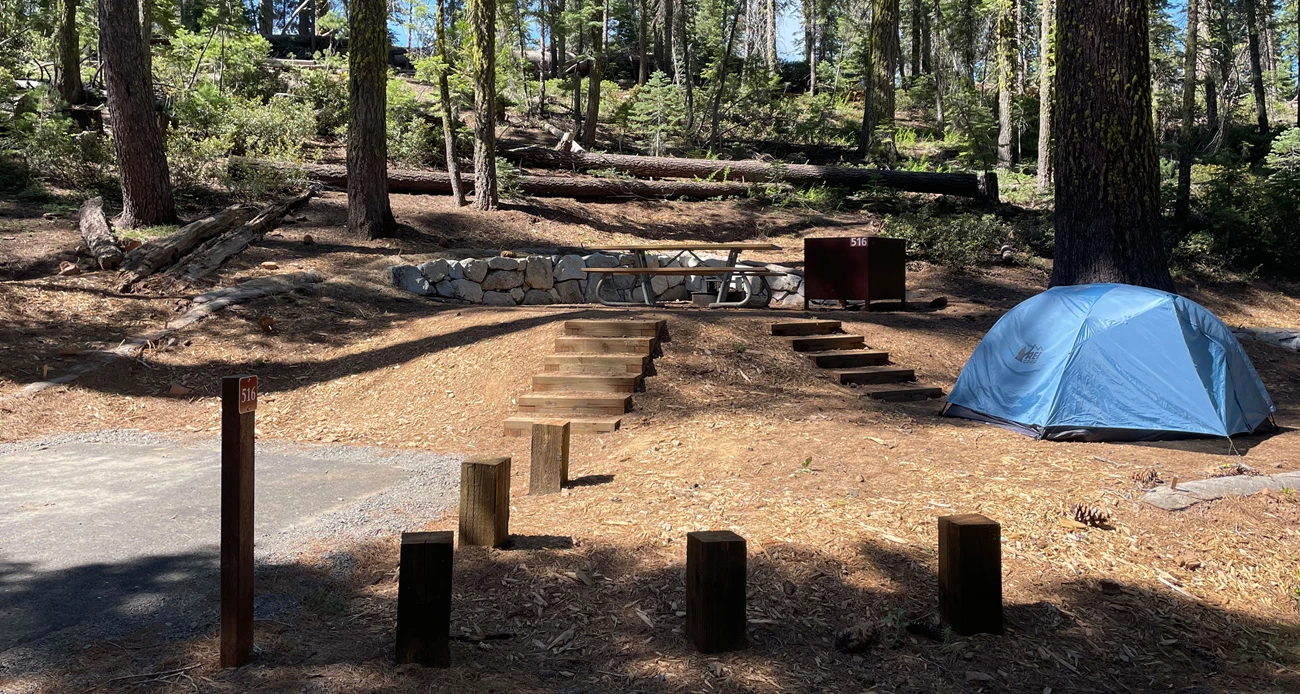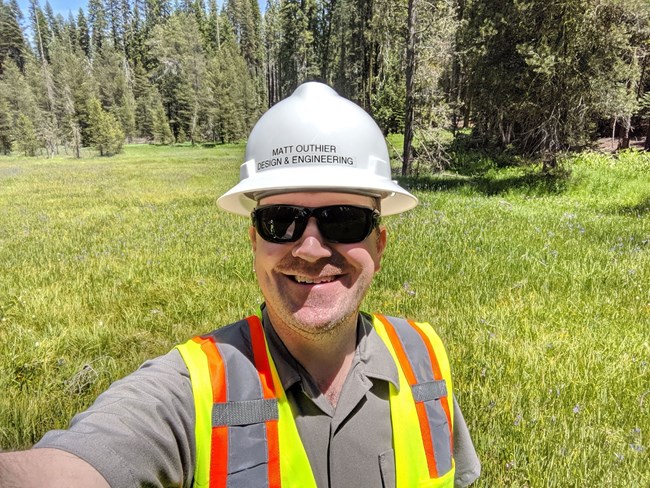Last updated: June 17, 2024
Article
Crane Flat Campground Modernization

NPS photo
Yosemite National Park’s popular Crane Flat Campground is welcoming visitors for the first time in four years thanks to a $9.8 million investment from the Great American Outdoors Act (GAOA). The funding enabled the long-needed modernization of a campground that had not seen upgrades since 1962.
Over the years, the campground that hosts more than 100,000 visitors a year had become rundown.
The picnic tables and fire rings were rusty, and camp signs faded. The campsites needed to be better defined, and campers parked anywhere there was space, so sensitive vegetation often got trampled on. But one of the biggest complaints was the lack of flat spots to pitch a tent or set up for cooking and eating. Campers often improvised by shoving logs under table legs to make tables flat and carved in pads for their tents. The campground was shut down in 2020, shortly after the COVID-19 pandemic.

NPS photo
Redesigning an entire campground for a civil engineer with a background as an Eagle Scout and avid camper was a dream project for Matt Outhier, who works for the National Park Service and spent five years in the Design & Engineering Branch at Yosemite.
“I was a Boy Scout growing up, and I love the outdoors, but besides that, this project had a lot of elements that just really spoke to me,” Outhier said excitedly. “During the design process, we spent hours researching and reading website reviews. We wanted to pick up camper’s vibes about the place.”
They discovered the campground was often a last resort for campers and that the second word in Crane Flat was a misnomer. There was nothing flat about it. For many park visitors, it was a backup site for when the more popular campsites in the Valley filled up.
With his work cut out for him, Outhier was determined to make the campground a prime destination in the park.
“I spent many, many nights at Crane Flat, especially during construction phase, just to get a feel for the place,” Outhier said. “It's a pretty special place.”
The conifers, pine and oak trees provide excellent cover for wildlife. Outhier said he captured photos of bears and deer coming by daily. One morning, when crews were coming around the corner in one of the back loops, they saw a doe had just given birth to a fawn in the middle of a campground road. “It was just spectacular,” Outhier said.

NPS photo
Crews graded more than 160 campsites, including eight accessible campsites. Each site now has a tent pad, fire ring, and picnic table contiguous to each other, making it a pleasant outdoor living area for all visitors.
Underground pipes called culverts were added to improve drainage, and tent pads were built at all sites. The eight fully accessible campsites were constructed along with accessible paths that connect to comfort stations. These accessible sites also include accessible bear boxes that are placed higher off the ground, and also include accessible, double walled fire rings.
Several double sites were added, allowing groups of up to 12 people to camp together. Retaining walls and steps were added to several sites in the 400 and 500 loops to make the camping experience more enjoyable.
“Historically, these were undesirable campsites due to the challenging grades, but now they’re some of the best spots in the campground,” said Outhier.
Cooking and eating areas are now more clearly defined and include new picnic tables, fire rings, and bear-proof storage lockers. Stop logs and boulders were also installed to prevent off-road travel, and landscape vegetation and ground cover was restored.
“I really hope this becomes a desirable place where people want to come and stay,” he said. “I hope people come back and notice how different it is now. That's what I'm most excited about - to see people’s reactions and read reviews that are positive. This is another example of how the Great American Outdoors Act is transforming parks across the country.”
